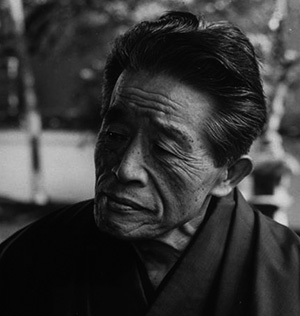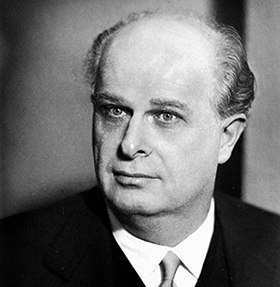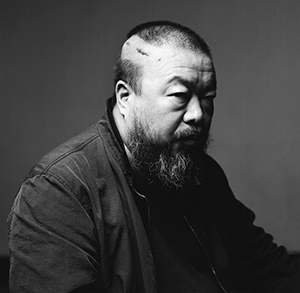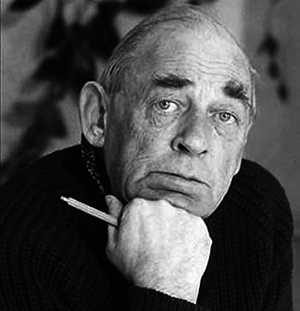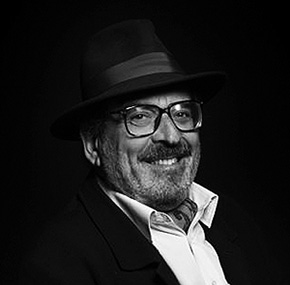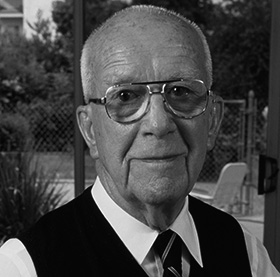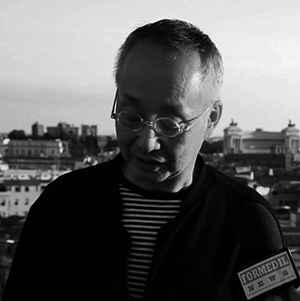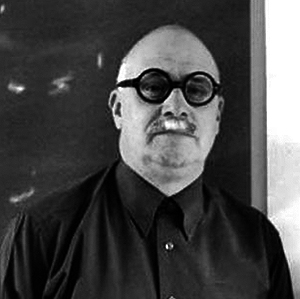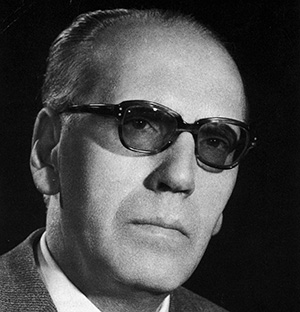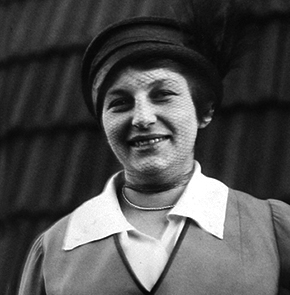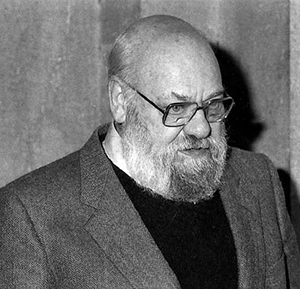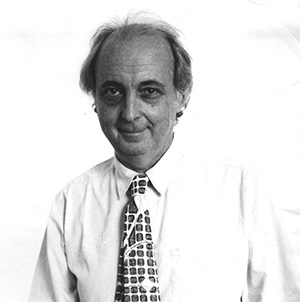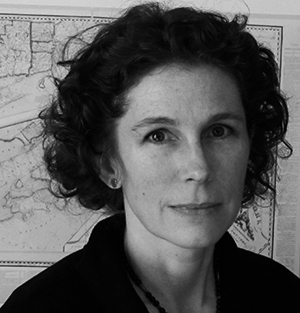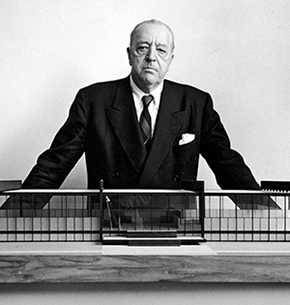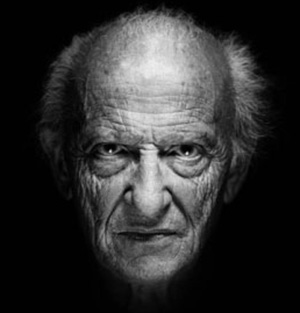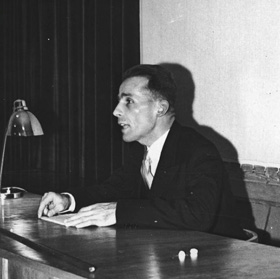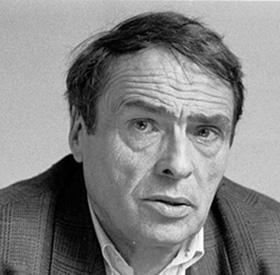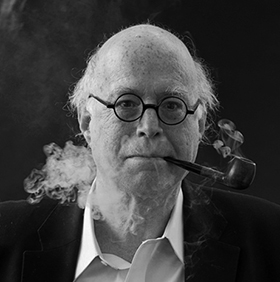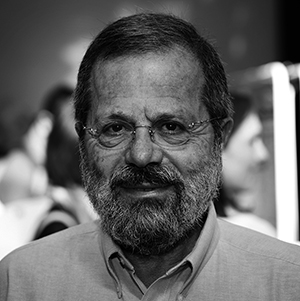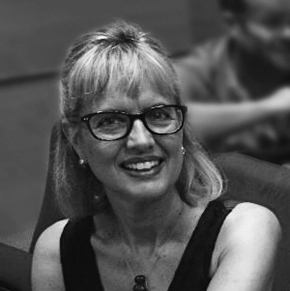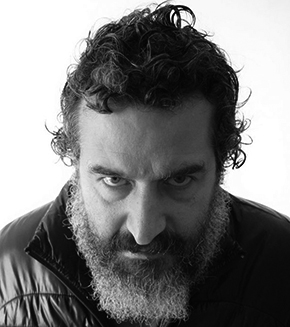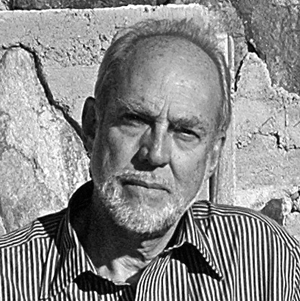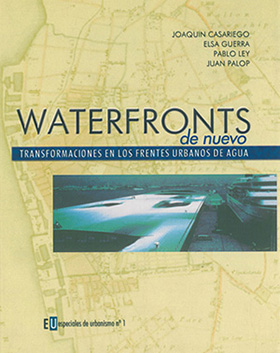A conversation between Simona Rota, Cruz García y Nathalie Frankowski.
Pictures of the island of Tenerife in the series Instant Village
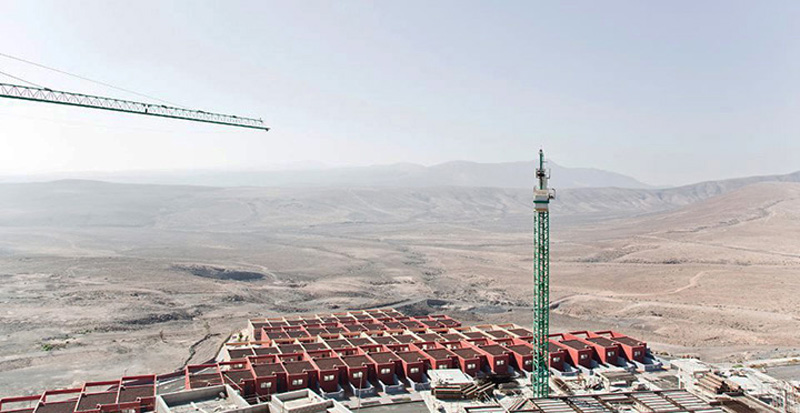 Fuerteventura Island. Simona Rota, 2012
Fuerteventura Island. Simona Rota, 2012
In July 2012, the young photographer Simona Rota had a conversation about their photographic ideas with editors of the journal WAI, Cruz García y Nathalie Frankowski. Simona is a great artist who has exhibited his work in many parts of Europe. Among themselves, note is the series Ostalgia, architectures dedicated to little known in Eastern Europe. For several years, also spent a long period of residence in the Canary Islands and then prepare another fundamental set in its trajectory would call Instant Village. That "Instant People" is about those other landscapes that rapid urbanization has occurred that has taken place in these islands over the last half century. Now, has the commitment to publish a book entitled missbehave that aims to show some of their work and that is emerging through funding strategy "crowdfunding”.
The interest of the conversation he had with Garcia and Simona Frankowski is that she explains what he thinks about the relationship between photography, landscape and architecture. Then, we invite you to read the verbatim transcript of that discussion:
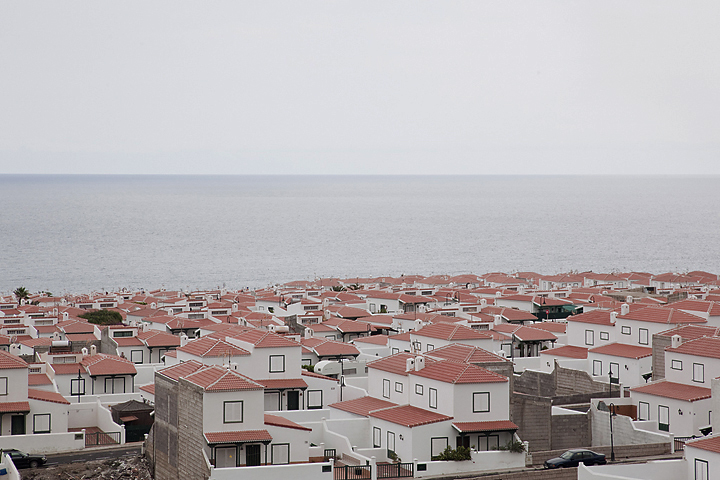 Having southernife. Instant Village. Simona Rota, 2010
Having southernife. Instant Village. Simona Rota, 2010
Can you give us a brief introduction about your interest in the relationship between architecture and photography? How did your passion for architectural representation and reproduction?
My interests in photography and architecture found at some point, naturally. I related to the architecture of many ways. For one personally, since most of my best friends are architects. On the other hand, I studied Political Science and my work for the Master's degree was about building, representation and reception of national image: an issue that forced me to explore the literature on the relationship between architecture and policies nation branding. I am also related to professional, since from 2004 and until today, lleva trabajando collaborating with the architects, various guises, as Office Manager, communication as a freelance consultant and external promotion as Manager. In this sense, part of my job involves a direct relationship with photographers and architectural publications, hire when selecting photographers or graphic material. Apart from this, Year 2008, after returning from a short vacation in Iceland, sold by primer photographs MIAs time to one architecture magazine. They were pictures of a building architect Hogna Icelandic Sigurdardottir. For me, that small personal event was unexpected and pleasant: I interpreted it as a sign and since then I have continued photographing architecture custom or commercial.
On the other hand, regarding personal projects, I'm not sure that the architecture itself constitute sufficient reason for me to generate a photography work. The architecture is omnipresent in my work, but not the end of it. It is true, I love the architecture, but even more I love the food and yet I do photography work using the motif of food; I myself have noticed that there are many things I love and never give rise to a photography project. So I think that my passion for architecture not explain my interest Porla same. Miinterés for architecture in the photograph is a choice that has resulted from reflection andthe intuition. Elijofotografiar insofar architecture which, for my, architecture is an appropriate visual tool to reflect on the use of land, built landscape configuration, artificial environment, the construction of images and expressions of power. The architecture is made by us, by humans. Although my photographs are almost no people, my concern is not about the objects, but the authors of these objects.
What is the process in which generate your photographic series (Village Instant eg, Ostalgia, Placelessness)? How do you identify the buildings or spaces where you decide to photograph? Do you maintain a personal relationship with these structures and spaces, or it is a general interest or circumstances?
My photo series are often born of evil-être, My disagreement impotent given circumstances. At first it's very personal, so personal that often scrap fledgling series because I want to be transformed into something entirely autobiographical. To take them off of me without suffering, the ground sending a folder I called "I know", a folder that I will not try to order even in my most optimistic moments. But the series still developing are those that, from that personal distress, seem to have the ability to build a broader issue, an issue that concerns or may concern more people, besides myself. For example, la series' Instant Village’ begins with a feeling of disappointment powerless to the way in which the territory has been treated in the Canaries. I lived for several years in the islands, a spectacular place when there is really run by imbeciles urban development. I'm not adept of non-intervention in nature; on the contrary, I think the natural landscape of human intervention needed to become acceptable. I think there was a chance in the Canary Islands have a good built landscape but instead there is much rubbish. This great opportunity wasted can not leave you without reaction, ni ni our other gente. I think Instant Village, although a project generated by a personal anxiety, has the ability to illustrate an issue with broader implications.
To determine whether a subject can be more than personal distress, I usually document, with more or less rigor. Seeking information on the subject, leo, see interviews, Seeking other visual projects that have been made on the same subject. Actually I use exactly the same methods of research used to do college work inthe. Hastaque started to practice photography, was convinced that having studied political science was the most useless thing in my life; now I'm not so sure because, to photograph, most useful I have studied political science who have studied Photography.
Reflection with me throughout the process, but before you start shooting and then, in the selection and editing of images and never while I'm photographing on the site. While nothing is photographed more than the silly limitations machine, me with my physical limitations and my doubts weather andthe. Silo I'm doing just convinced me, I feel very tired soon and I can hardly keep moving. And I know that a shot will be good when I get really nervous, when shot, I go and come back to the site a little later to shoot exactly the same frame. I believe that decisions about the concept and consistency-based I take documentation and reflection while decisions on the visual character based on instinct took.
As for locating sites and reach them, the help of my friends is essential. I owe much. And in the case of 'Ostalgia’ could not have done anything without management work Architecture Center Vienna without the assistance of local guides. Sometimes I even write unknown people have come to see my pictures and I like talking points that might interest. I have a handicap: I can not drive a car and this sometimes severely limits my ability to move.
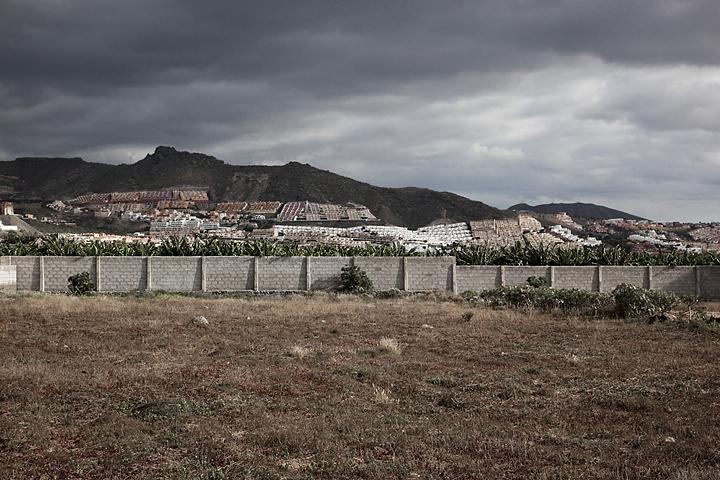 The hillside holiday resort. Playa de las Americas, Adeje. Instant Village. Simona Rota, 2010
The hillside holiday resort. Playa de las Americas, Adeje. Instant Village. Simona Rota, 2010
We are struck by the narrative power of your images. In WAI usually work with collages and photomontages, through the mixture of images previously disassociated, aspire to describe visual stories that until then existed only in our imagination. In that sense our images usually try to construct fictions. In your case, but working with real objects in existing environments, we have noticed a kind of secret language that goes beyond what is seen in the images. In the photos the environmental factors, shades, colors and textures, addition to the angles at which the photos are taken seem to suggest that architecture (or environment) is trying to communicate a message. Is there a narrative or theory behind the images? What photographic series trying to prove how Ostalgia instant Village? Is architecture in your images the object of attention or a vehicle to discuss issues that transcend architecture?
If there is a hidden language beyond my pictures is something that I can not know with certainty, may be well, but of course I do not intend to build it as such. What I can say is that a photograph or picture, general, may be more unfathomable and lead to more interpretations of what a planned initially had. As I see it, my photographs are an extension of myself, of how I am and I think in every moment of my life. When I decide to take a picture, the how and why of it, I'm not the same one that decides which should buy in a supermarket, because buying one thing and not another. As anyone, I have convictions, fears, opinions that go with me everywhere, also on my photographs. That language may not be hidden but the codification of myself and my life.
However, is true that in every job I intend to focus-mine first and then to the public on certain ideas and make them coherent through visual expression. These ideas often are muy clear before starting to shoot. So has happened with 'Instant Village’ with the 'Big Exit'. I knew very well from the start I wanted to communicate and how to do. An 'Instant Village’ wanted to talk about the artificial and harmful that urbanism can be. I think at certain times, achieves the successful series and other less successful; in fact I think this series simply need more images to better develop the idea, I think it's a question of quantity, repeat.
Sometimes, the process is reversed: I start shooting led by instinct and when I have a certain amount of images, attempt to understand myself, think, discover the ideas that are already present in the images, disciplining, discard the anecdotal and follow. So will that occurred with 'Ostalgia'. I was photographing in former Soviet countries, brought there by a custom; occasionally, a picture is out of order, was only "Mia". Initially, did not know he was doing, but I continued photographing and when I had a 20 photographs "mine" and then followed the analyzed but more disciplined and. And when I say disciplined, I mean to give coherence to the frames, the type of light, seeking atmospheres, etc.. What has resulted is a series that touches on many subjects: the representation of power through architecture, the absence of the individual in society authoritarian, the failure of the Soviet utopia, the post-communist decline.
Are you trying to manipulate photos (focus point, shades, Photo treatment) chord with the message you want to take with each photographic series? or you rather let the public the photo interpretation?
I do not know if you can conceive of independent photo manipulation and photography to do framing involves, ie cuts within a wider view . Since there is a glass between the human eye and the world is shown in front of the eye, actually no longer speak of representation but. Manipulating the spot begins, the origin Photo, on the glass that separates us and offers us a picture that melt in the same plane all dimensions of world. This type of manipulation is the most use: framing. On the other hand, still necessary and normal process optimization images: balancing tones, clean dirt, emphasize a shadow or a light but faded existing, enderezar lienzo or verticales, etc.. I want to get a picture but poor means effective. Hitherto, to achieve my goals with photography, I have not needed more than a minimal post production flow optimization. But maybe in the future I will want to experience more things that require the use of more complex manipulation tools.
I can not control and do not want the public to interpretation of my photographs. Good to hear or read what people think about them, helps me see them with critical distance. Knowing different opinions helps me especially when I'm developing a work.
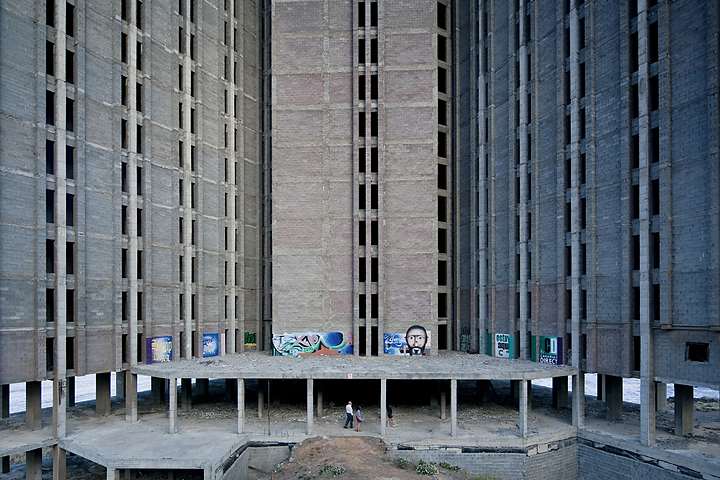 Abandoned Skyscraper. Añaza Coast, Santa Cruz de Tenerife. Instant Village. Simona Rota, 2010
Abandoned Skyscraper. Añaza Coast, Santa Cruz de Tenerife. Instant Village. Simona Rota, 2010
A visual relationship between some of the photographic series; Will you track a "master plan" to have to shoot you interested? Where do you want to take architectural photography?
I mapped out a master plan to develop themes. I care about recurring themes, sometimes these issues become obsessions that keep appearing in all my work and give a kind of hidden unit, end so that appear to respond to a plan.
So far in my photography work predominantly descriptive but in the future I would like to further develop the photograph also documented scenarios where I intervene, myself sometimes as in 'Big Exit’ or if I can, through an actor. On the other hand, architectural photography in commercial, what is called assignment photography, I would like to link my work to a few architects that I choose or elect me and follow the process of transformation of the place that occur before, during and after the construction of its projects. But clearly, get aa make such documentation, depends not only on me but also a commitment by the architect or building customer.
The issue of power or powerlessness of architecture seems to be a constant in some of your photographic series. La serie Placelessness (2009) seems to emphasize the weakness of low-intensity urban settings while architectural photos we've seen of Ostalgia (2010-12) it just seems to explore persistent monumental architecture in AUN su state of decay abandonment. Is the relationship between architecture and power (the lack of power) something you want to explore in this photographic series? Do you think these ideas or themes of the photographic series are inherent characteristics of the object of study, these concepts are the product of interpretation tu as visual artist?
At the beginning of the interview said that, in my personal work, architecture itself is not what interests me, but the readings can be made through it. I use and offer architecture as access key themes in my work deal. Among these issues the power or impotence of architecture there, but residually. If the power of impotence is, what really interests me is the power or impotence of humanity, as the sum of individuals as sociedad.
According to affirm, despite its omnipresence in your photographs architecture is not the end of your work but a vehicle to communicate ideas about humanity, about the authors of the architecture and the impact of the ideas of these authors. Do you think the architecture and the built environment as an image is an effective means to speak of the human condition, the ambitions and failures of societies and their ideologies? Do you think there are other elements that could communicate these ideas with the same intensity? Following this idea, Is photography a effective tool in communicating abstract ideas of humanity?
I am convinced that the built environment (the deconstruido, as negative) and therefore, pictures of the same, are an effective way to talk about ourselves, as a society. What we are, what we want to have, what is there apparently tried, is how we appropriate the territory, in the life and death of our colonies. Perhaps I was not clear: Authors of the architecture I do not mean to architects but to society in general that includes, clear-, but architects are not entirely responsible for his architecture, I think they are only agents involved in a process with a lot of pressures of all kinds and with many more actors besides themselves. It is possible that as a musician, music represents the highest cultural ability describe when mankind. Nolo is for me yet. To understand and grasp the world, I need thereof photographs.
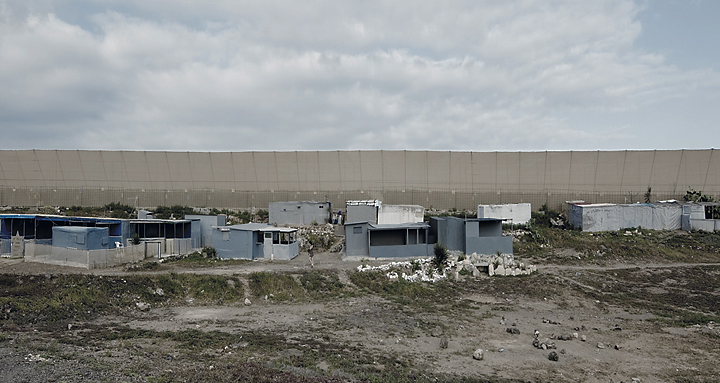 Shanty Town by the agricultural space greenhouses. The Coats, Tenerife. Instant Village. Simona Rota, 2010
Shanty Town by the agricultural space greenhouses. The Coats, Tenerife. Instant Village. Simona Rota, 2010
Photography as artistic element has the potential to turn decadent stage in a piece of art. In a series Ostalgia us about the failure of utopia and the implications that this entails. Do you think the message may lose its energy decay between beauty Photo?
Not define photography as "artistic element" and not think it's entirely appropriate to speak of "decadence message". I go for parts. First, not know how to define photography; but what I have clear is that, for my, photography implies document attributes, is proof that someone or something has been there, watching or recording something and photographing in some space and some time. The light is usually present in the process, although not always, thus the term "photo" is obsolete. In these terms a render for example is not a photograph, but an image. When a document, photography is, first, real information. Second, I think the message is something that can be derived or not this information. I would say it is almost a prosthesis, an interpretation added for myself or for anyone looking photography, but photography is something inherently contains. The pictures do not contain messages.
Photographs of 'Ostalgia’ give an indisputable information and this is: buildings and places that do not look to be in their prime. The day you and I stop thinking and interpreting, Despite those pictures will follow our, teaching the same. On the other hand, My message is not so indisputable. First, the message is not one, is multiple, and second, depends little on me as the author of the photographs. So, is true that I've been meaning to talk of decline, and you have reacted to this part, but I've been meaning to talk about the conventionality of the Western view of this and I'm afraid that's something I have not managed to effectively convey, since nobody so far has told me something about. My conclusion about the message is that this results from the interaction between photography and the look, is something every time staff, DNA depends on each individual and their cultural assumptions. But for the message to be generated, First there has to be someone who wants to look at my pictures. And what better way I have to give them half a chance but through seduction? Try my photographs are attractive; I do not mean beautiful, that maybe so are sometimes, but attractive. With this I think I answer your question about the relationship between power and beauty post Photo.
Now that you understand the photographs as an extension of yourself, ¿Tus see more photos like the piezo art as communication tools (policy, social, personal)?
If most pictures are in the art, is something that worries me because not up to me but a kind of external audit. I have no idea what is art or artistic and certainly am very uncomfortable with referring to myself as an artist. I see too, understand and remember little less. I have more defects, but these I can at least lessen with photography and this makes me a better person. Photography keeps me close and critical to what happens around me, I kept permeable. If further, my photographs make other (need not be many) react, think and feel something, I think it's enough.
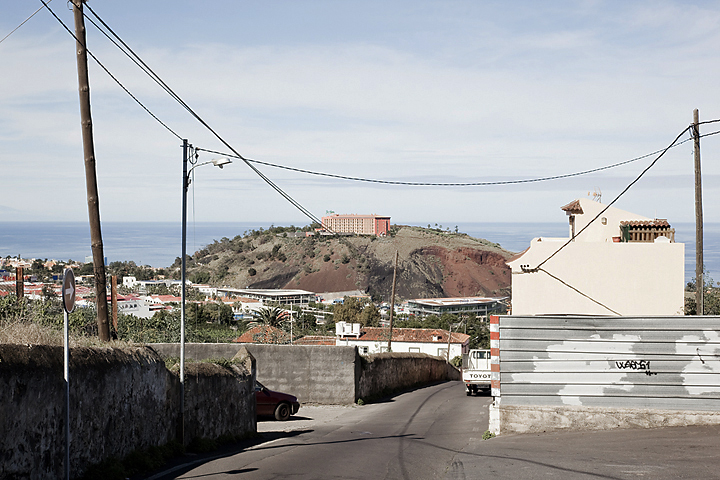 Hotel Las Eagles. Puerto de la Cruz, Tenerife. Instant Village. Simona Rota, 2010
Hotel Las Eagles. Puerto de la Cruz, Tenerife. Instant Village. Simona Rota, 2010
Is photography your passion or what is the message you convey through photography that catches your interest? Do you see yourself in the future experimenting with other tools?
I love photography first as someone who sees photography, and only then as someone chelates creates. Lafotografía I find a very curious: appears that shows it all as it is, all those details, and as available, distort my comprehension. When I see a picture I seem to like my cat when he sees himself in the mirror and try to reach out and touch the other cat is watching, so photography gets to have my mind awake and in a state of shock. But when I'm the one that generates pictures, then the need to teach, sharing, to communicate is more important than the medium I use. What I look for is an appropriate way to my personality and what I want to communicate. For example, do not think I could have done painting, although the school had a talent for it: I'm someone very impatient and painting requires a much longer process chelates photography. Meatrae collage, I always liked cutting out images of what is, magazine, of photographs and treasure, but do not know why, perhaps to make collage in the not defined.
More Information:
The architecture of photography. Magazine WAI No. 2 of Julio 2012
Simona Rota's Instant Village. DPR Barcelona
Missbehave. Simona Rota and Agustín Fernández Mallo. Book-A Editorial
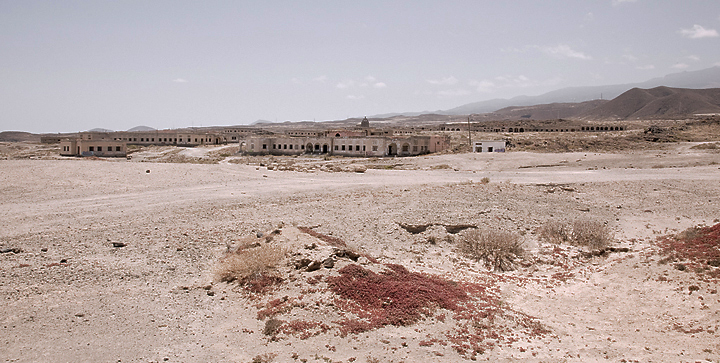 The leprosarium, abandoned settlement. Arico, Tenerife. Instant Village. Simona Rota, 2010
The leprosarium, abandoned settlement. Arico, Tenerife. Instant Village. Simona Rota, 2010
